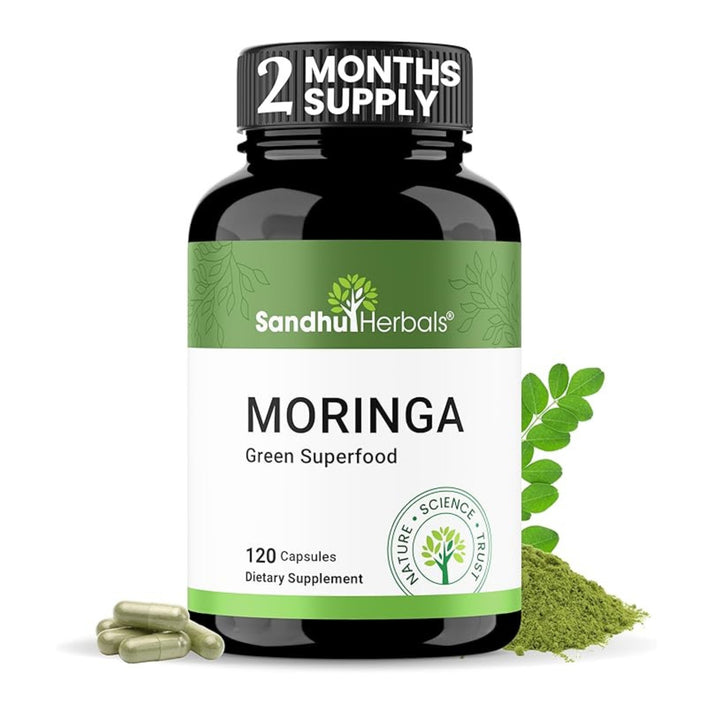Why a “food-first + simple stack” approach works
Your gut responds best to patterns, not perfection. Regular meals, enough fluids, fiber from plants, and adequate sleep set the foundation. Supplements can then provide consistent nutritional support on top of what you eat—especially on busy days when meals are less predictable. Start with the basics: eat at regular times, chew slowly, drink water throughout the day, and make room for light movement. These habits make any gut-support routine more effective and easier to sustain.
Sea moss: what it is, and how it fits

“Sea moss” usually refers to edible red seaweeds—commonly Chondrus crispus (Irish moss) and sometimes other genera used in food. Seaweeds naturally contain minerals and soluble fibers (polysaccharides) that many people add to meals for a balanced, comfortable digestive rhythm. Reviews of edible seaweeds describe their minerals, polyphenols, and fiber content; some seaweed polysaccharides show prebiotic potential in lab and early human work, though evidence is still developing for specific species and doses.
How to use: Stir into smoothies, oats, or yogurt, ideally with a glass of water. Morning or lunch works well—choose the time you’ll remember. If you’re new to sea moss, begin with the lowest labeled amount and increase gradually based on comfort.
Safety notes specific to sea moss: Seaweeds can be naturally high in iodine and may accumulate trace metals from their environment; reputable sourcing and batch testing matter. Keep intake moderate and follow label directions—especially if you have thyroid guidance from a clinician.
Colostrum: what it is, and how it fits

Colostrum is the first milk produced by mammals after birth. Bovine colostrum used in supplements contains proteins, immunoglobulins, lipids, and oligosaccharides—components studied for their role in gut and immune support.
Why people consider it for gut routines. Emerging clinical evidence (including athletes and other adult groups) suggests bovine colostrum can support markers of gut barrier function—for example, easing elevated intestinal permeability on lab assays—though more well-designed randomized trials are needed and results can vary by product quality, dose, and duration. This is supportive, not a treatment claim.
How to use: Mix powder into a cool smoothie or yogurt (follow your label; some advise avoiding heat). Morning or early afternoon is common. Pick one time and keep it steady for a few weeks before judging how it feels.
Safety notes: If you have a dairy allergy or follow dairy-free guidance, consult your healthcare provider. Keep other routine basics (sleep, balanced meals) in place for best results.
Moringa: what it is, and how it fits

Moringa oleifera is a fast-growing tree. The leaves are used as a nutrient-dense food ingredient (powders/capsules), providing proteins, minerals, and polyphenols with antioxidant activity. Human GI-specific data are still limited; most evidence is compositional and general nutrition/antioxidant support.
How to use: Morning or lunchtime is common. If you’re sensitive to herbs, start low and go slow; some adults report GI upset at high powder doses, so begin with the lowest labeled amount and take with food if you prefer gentler digestion.
What to expect: A “quiet” addition that helps you keep plant diversity and nutrient density high day to day as part of a food-first routine.

Putting it together (simple weekly rhythm)
- Week 1: one product + meals (e.g., add sea moss to breakfast smoothies and track how you feel).
- Week 2: keep sea moss; add colostrum with a mid-morning snack or lunch.
- Week 3: keep both; add moringa with lunch.
- Evaluate: note meal timing, comfort, energy, and sleep. Adjust only one variable at a time.
Timing, pairing, and consistency tips
- Take supplements with food if you prefer gentler digestion.
- Drink water regularly; hydration helps soluble fibers do their job.
- Space products if your stomach is sensitive (e.g., sea moss at breakfast, colostrum at lunch, moringa at dinner).
- Give any change 2–4 weeks before you judge the feel—your gut likes routines.
Label-reading tips (keep it clean and clear)
- Look for clear serving sizes and straightforward ingredient lists.
- Note any allergen statements and follow storage directions.
- Avoid stacking similar ingredients across multiple products without reviewing total daily amounts.
Safety first
If you are pregnant or nursing, managing a medical condition, or taking prescription medications, talk with your healthcare provider before starting any new supplement. Stop use if you notice unwanted effects. Supplements are not intended to diagnose, treat, cure, or prevent any disease. This article is educational and not medical advice.
FAQs
1. Can I take sea moss, colostrum, and moringa together?
Yes—many people use them the same day. If you’re sensitive, introduce one at a time and space with meals.
2. Morning or night?
Choose the time you’ll remember. Many prefer sea moss in the morning, colostrum midday, and moringa with lunch or early dinner.
3. How long until I notice anything?
Most routines settle in over 2–4 weeks. Track comfort, regularity, and meal consistency rather than looking for a dramatic change.
4. Food + supplements—what matters most?
Food pattern and hydration. Supplements help keep support consistent on days when meals aren’t perfect.





